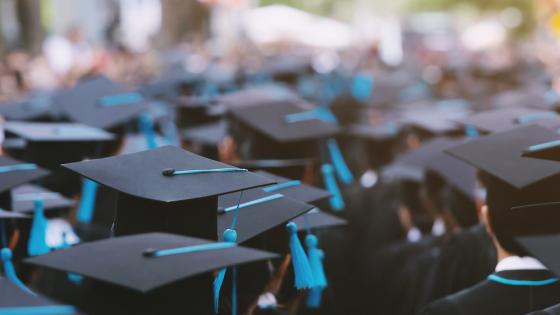In today’s hyper-competitive environment, getting into university seems to call for ever-increasing investments by parents and students. The globalisation of education and the establishment of the middle class, which values high-quality education and can afford it, in countries like China and India has led to an increasing pool of applicants in top institutions worldwide.
In Korea, for example, secondary school students perform well in international comparisons such as PISA.
Almost $18 billion was spent in 2013 on prep schools by those taking the college entrance examination. The perceived excessive studying (15-hour days are the norm) resulted in a government order that prep schools close by 10pm, though even this was apparently circumvented by blacked-out windows.
A recent discussion on the Australian Broadcasting Corporation claims that “South Korean education success has its costs in unhappiness and suicide rates’’ (Carneys 2015). The high suicide rate among teenagers in Korea is frequently attributed to their and others’ expectations for them to do well in the competition for college admissions (Ahn and Baek 2013).
In China, the infamous ‘gaokao’ taken to enter university is also notorious for creating extreme stress (Kristof 2012). Even well-meaning attempts by governments to increase educational opportunities have inadvertently led to greater effort on the part of students. For example, the Right to Education Act in India, which stipulated free access to schooling up to age 15, is shown to have led to large increases in private tutoring, especially by students from well-off families (Chatterjee et al. 2020).
Extreme stress related to academic achievement is also a phenomenon in the US. In 2018, the Centers for Disease Control (CDC) reported that the suicide rate among US youth aged 10 to 17 increased by 70% between 2006 and 2016. In California, one in five high school students admitted to having contemplated suicide (Walker 2018). A considerable part of this is attributed to increasing competitive pressures and the importance placed on admission to top schools. Hsin and Xie (2014) report that this is more so for certain immigrant groups: the high academic effort Asian-Americans exert leads to lower subjective well-being and psychological and social difficulties. These difficulties continue beyond high school: suicide in college, especially in the most selective ones, is the second leading cause of death for college students (Turner et al. 2013, Dent 2015).
Focusing on college admissions, one might argue that a key advantage of testing is that it allows the most able students, who value college quality most or are able to obtain high scores most easily, to match with the best colleges. According to this view, the ablest students are like buyers in a market who are willing to pay a higher price for a good in limited supply. In a typical market, however, sellers value the money buyers pay them for the goods. In contrast, students’ hard work in prep school generates little value for colleges and for students’ careers once they are admitted to colleges. In this sense, students’ effort is wasted, and the tougher the competition for college admissions, the greater the resulting waste.
Can competition in such environments be tempered? Addressing this issue is more difficult than it might initially appear. As we have seen from the policy experiment in Korea, trying to limit such efforts may be difficult to implement. Changes to the admissions process are also fraught with pitfalls: the match quality may suffer,
and if the new system makes some students worse off, it could face considerable resistance.
In a recent paper (Krishna et al. 2022), we look for simple modifications to college admission processes that make all students better off. Our analysis suggests that grouping similar colleges together and randomly allocating to these colleges the students who would be admitted to them based on their test scores can often benefit all students. This may seem surprising at first, as a fixed set of college seats implies that a student can be admitted to a better college only if another student is admitted to a worse college. What makes it possible for all students to benefit is that test preparation is costly, and the policy we suggest reduces these costs.
Relative to the baseline contest in which students are allocated based on their precise exam score, a policy that pools some colleges lead to some students being admitted to better colleges and some to worse ones. The students allocated to better colleges will be better off as long as their cost increase is not too large. Those allocated to worse schools lose in terms of the school quality but can gain if they incur lower preparation costs. We specify the conditions under which this happens. We then specify the conditions under which we can find policies which benefit all students and continue to work even if the set of colleges changes or some colleges change the number of students they admit.
To show the practical value of our approach, we conduct a simulation using data on college admissions in Turkey. We find the best ‘bottom pooling’ interval, which pools together a fraction of the lowest ranked colleges and randomly allocates to them the corresponding fraction of the students with the lowest test scores. This policy benefits all students, especially the lower performing ones: the mean student payoff increases by 27%, while the lower performing ones allocated to the pooled colleges gain 83% on average.
To further test the effect of pooling policies on actual student behaviour, we design a laboratory experiment based on the empirical estimates obtained from our simulation. We evaluate subjects’ behaviour in the baseline contest and with bottom pooling and find that the behaviour is in broad agreement with the theory. A small set of subjects – those with the lowest ability among the subjects who should not be affected by the bottom pooling policy – behave in a way that slightly decreases their monetary payoffs. We provide possible explanations for this and argue that in certain situations that this behaviour may still be optimal.
Of course, policy recommendations and specific modifications to existing college admission processes must be tailored to the situation at hand. In Turkey, there is a centralised admissions system in which students with higher scores get to choose their college before those with lower scores. This is the setting we look at. In the US, the setting is quite different: college admission rules differ by college and are far from transparent. If tests used as part of the admissions procedure, like the SATs or ACTs, become less precise, colleges may increase the weight of other measures (such as extra-curricular activities) in the admissions process. This may have the perverse effect that the overall process would become noisier without substantially reducing effort. Moreover, to the extent that extra-curricular activities are more widely available to higher socioeconomic groups, they would put disadvantaged applicants at a further disadvantage.
Nevertheless, our work suggests that simple policies like pooling colleges and adding a random component to the college admissions process could potentially improve the welfare of millions of college admissions applicants.
References
Ahn S-Y and H-J Baek (2013), “Academic achievement-oriented society and its relationship to the psychological well-being of Korean adolescents,” in CC Yi (ed) The psychological well-being of East Asian youth, Springer.
Chatterjee, C, E Hanushek and S Mahendiran (2022), “Unintended consequences to education for all: India’s Right to Education Act”, VoxEU.org, 23 July.
Dale, S B, and B K Alan (2002), “Estimating the Payoff to Attending a More Selective College: An Application of Selection on Observables and Unobservables,” The Quarterly Journal of Economics 117(4): 1491–1527.
Dent, M (2015), “Penn Face’ and the ‘social’ Ivy’s suicide problem, and how students are fighting back”, BillyPenn.
Krishna, K, S Lychagin, W Olszewski, R Siegel and C Tergiman (2022), “Pareto Improvements in the Contest for College Admissions”, NBER Working Paper No. 30220.
Kristof, G, (2012), “China College Entrance Exam, Gaokao, Being Reconsidered: Standardised Testing Is Worse In China Than In US”, HUFFPOST.
Mountjoy, J and B R Hickman (2021), “The Returns to College(s): Relative Value-Added and Match Effects in Higher Education”, NBER Working Paper No.20276.
Turner, J, E Leno, and A Keller (2013), “Causes of Mortality Among American College Students: A Pilot Study”, Journal of College Student Psychotherapy 27: 31-42.
Walker, T (2018), “As Teen Suicide Rate Increases, States Look to Schools to Address Crisis”, National Education Association.








